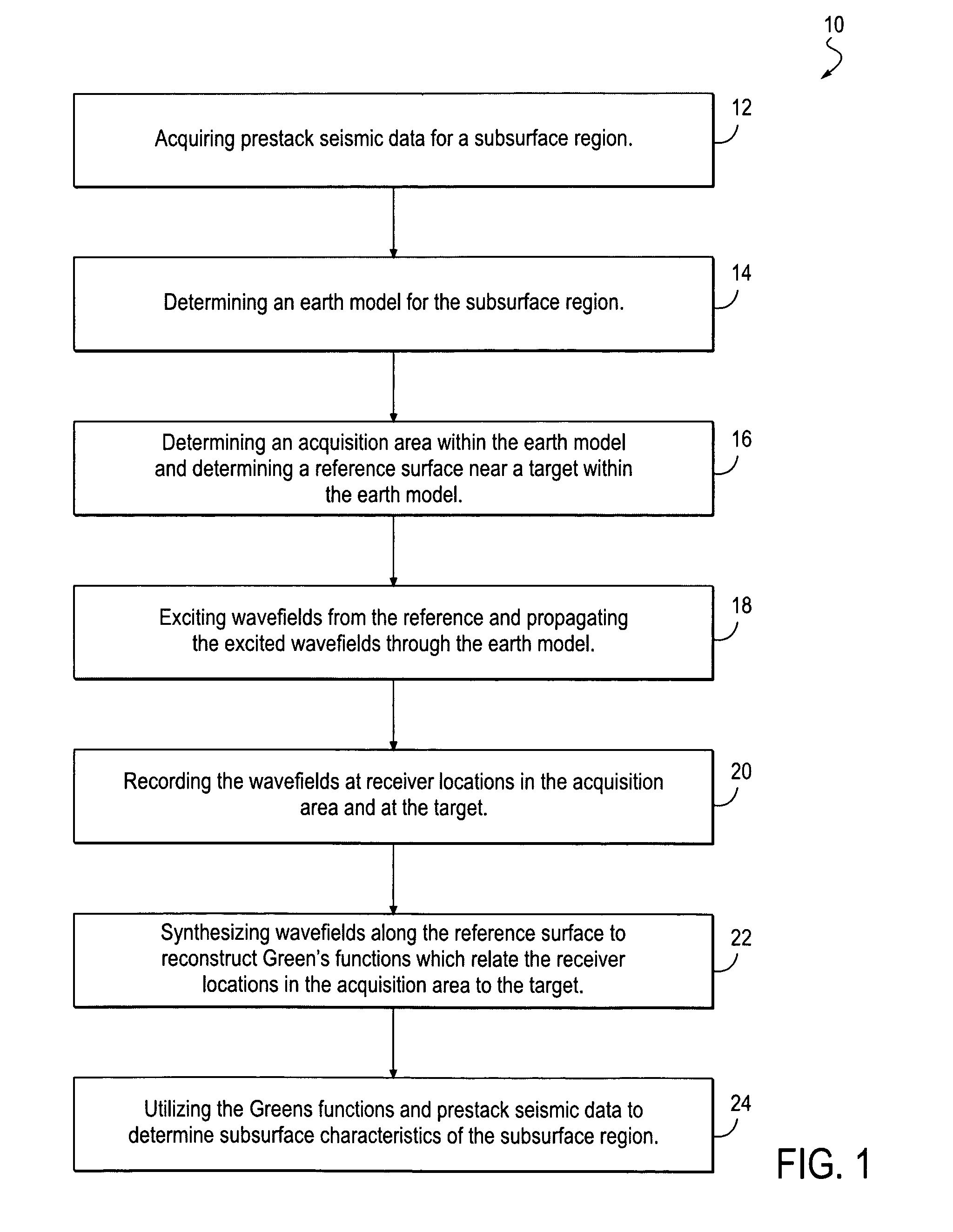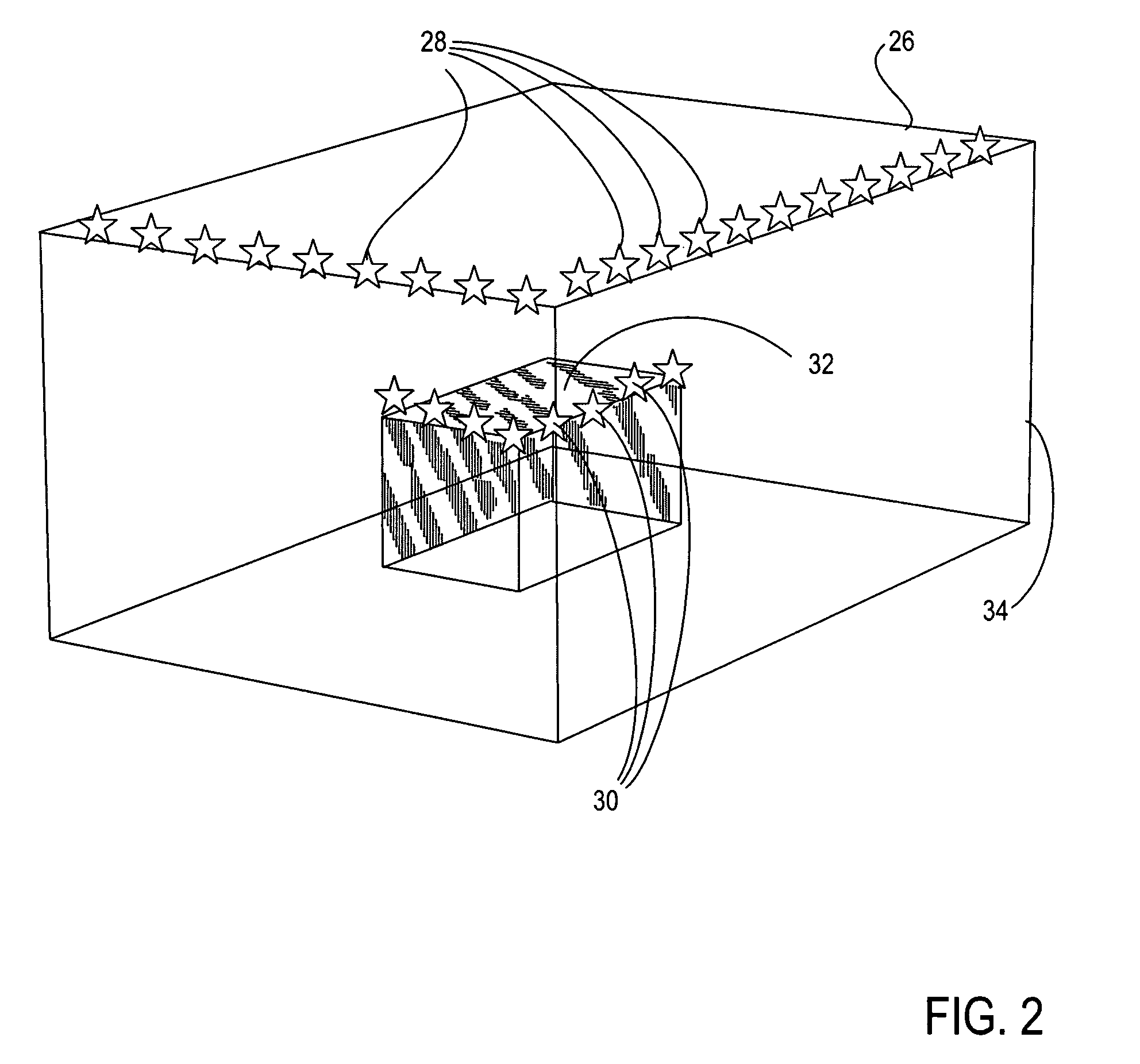Method for target-oriented reverse time migration for prestack depth imaging
a technology of prestack depth imaging and target-oriented reverse time migration, which is applied in the direction of seismology for waterlogging, using reradiation, instruments, etc., can solve the problems of high computational cost of rtm, the problem of solving the two-way wavefield propagation, and the large storage space of rtm for rtm
- Summary
- Abstract
- Description
- Claims
- Application Information
AI Technical Summary
Benefits of technology
Problems solved by technology
Method used
Image
Examples
Embodiment Construction
[0026]The present invention improves the computational efficiency of RTM by focusing on target areas. Computational savings is achieved through limiting Green's functions related to target areas instead of over the entire volume of an earth model.
[0027]FIG. 1 illustrates one embodiment of the present invention for a computer-implemented method for target-oriented reverse time migration for prestack depth imaging 10. The method includes acquiring prestack seismic data for a subsurface region 12 and determining an earth model for the subsurface region 14. The method further includes determining an acquisition area within the earth model and determining a reference surface near a target within the earth model 16, and exciting wavefields from the reference surface and propagating the excited wavefields through the earth model 18. The method also includes recording the wavefields at receiver locations in the acquisition area and at the target 20, and synthesizing wavefields along the ref...
PUM
 Login to View More
Login to View More Abstract
Description
Claims
Application Information
 Login to View More
Login to View More - R&D
- Intellectual Property
- Life Sciences
- Materials
- Tech Scout
- Unparalleled Data Quality
- Higher Quality Content
- 60% Fewer Hallucinations
Browse by: Latest US Patents, China's latest patents, Technical Efficacy Thesaurus, Application Domain, Technology Topic, Popular Technical Reports.
© 2025 PatSnap. All rights reserved.Legal|Privacy policy|Modern Slavery Act Transparency Statement|Sitemap|About US| Contact US: help@patsnap.com



